Posts Tagged ‘Lessons Learned’
There is no failure, there is only learning.
 You’re never really sure how your new project will turn out, unless you don’t try. Not trying is the only way to guarantee certainty – certainty that nothing good will come of it.
You’re never really sure how your new project will turn out, unless you don’t try. Not trying is the only way to guarantee certainty – certainty that nothing good will come of it.
There’s been a lot of talk about creating a culture where failure is accepted. But, failure will never be accepted, and nor should it be. Even the failing forward flavor won’t be tolerated. There’s a skunk-like stink to the word that cannot be cleansed. Failure, as a word, should be struck from the vernacular.
If you have a good plan and you execute it well, there can be no failure. The plan can deliver unanticipated results, but that’s not failure, that’s called learning. If the team runs the same experiment three times in a row, that, too, is not failure. That’s “not learning”. The not learning is a result of something, and that something should be pursued until you learn its name and address. And once named, made to go away.
When the proposed plan is reviewed and improved before it’s carried out, that’s not failure. That’s good process that creates good learning. If the plan is not reviewed, executed well and generates results less than anticipated, it’s not failure. You learned your process needs to change. Now it’s time to improve it.
When a good plan is executed poorly, there is no failure. You learned that one of your teams executed in a way that was different than your expectations. It’s time to learn why it went down as it did and why your expectations were the way they were. Learning on all fronts, failing on none.
Nothing good can come of using the f word, so don’t use it. Use “learn” instead. Don’t embrace failure, embrace learning. Don’t fail early and often, learn early and often. Don’t fail forward (whatever that is), just learn.
With failure there is fear of repercussion and a puckering on all fronts. With learning there is openness and opportunity. You choose the words, so choose wisely.
Image credit – IZATRINI.com
Celebrating Six Years of Blog Posts
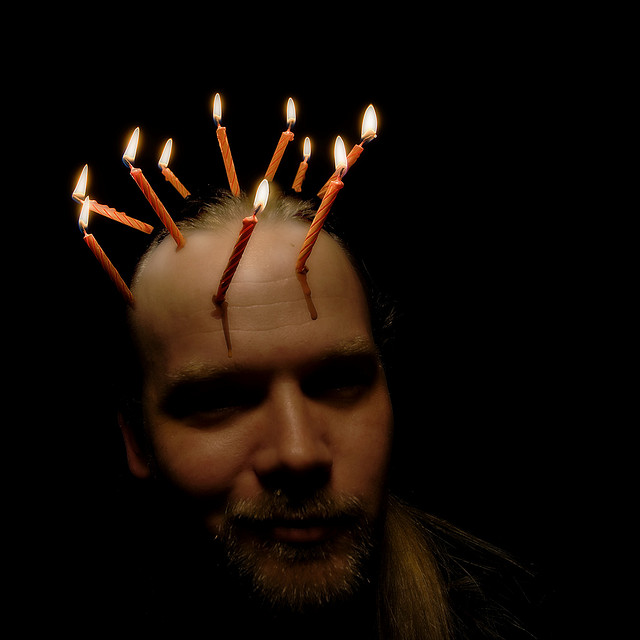 Today marks six years of blog posts published every Wednesday evening. 300 weeks in a row and I haven’t skipped, forgot, or repeated. All written without an editor, though you knew that by the typos and grammar stumbles.
Today marks six years of blog posts published every Wednesday evening. 300 weeks in a row and I haven’t skipped, forgot, or repeated. All written without an editor, though you knew that by the typos and grammar stumbles.
It’s a challenge to write every week, but it’s worth it. Writing demands thinking things through, which can be difficult especially if you want to write clearly, but thinking things through creates knowledge. Deep knowledge.
Over the last year I wrote a lot about self-awareness, mindfulness and intentions. I’m better for my meditations, and through osmosis, so are some of the people closest to me. I expect you’ll hear more on these themes over the next year.
I’ve put myself out there with my writing. With some posts I’m afraid to hit the publish key, and those are the posts that matter. My fear is the signal there’s something important in the post. I hope to write more of those.
I strive to write clearly and densely and avoid buzzwords. Innovation is the buzzword that trips me up. But like He-Who-Shall-Not-Be-Named, I’ll see if I can avoid calling it by name. (And never three times in the same post.) And my call-to-arms will be clearer, plainer, denser.
I’m not sure what next year will bring, but I hope it will be 52 more posts.
Thanks for reading.
Mike
Image credit – Bart.
Geometric Success Through Mentorship
 Business processes and operating plans don’t get things done. People do. And the true blocker of progress is not bureaucracy; it’s the lack of clarity of people. And that’s why mentorship is so important.
Business processes and operating plans don’t get things done. People do. And the true blocker of progress is not bureaucracy; it’s the lack of clarity of people. And that’s why mentorship is so important.
My definition of mentorship is: work that provides knowledge, support and advocacy necessary for new people to get things done. New can be new to company, new to role, or new to new environments or circumstances.
Mentorship is about helping new people recognize and understand unwritten rules on how things are done; helping them see the invisible power dynamics that generate the invisible forcing function that makes things happen; and supporting them as they navigate the organizational riptide.
The first job of a mentor is to commit to spending time with a worthy mentee. Check-the-box mentorship (mentorship for compliance) does not take a lot of time. (Usually several meetings will do.) But mentorship done well, mentorship worthy of the mentee, takes time and emotional investment.
Mentorship starts with a single page definition of the projects the mentee must get done. It’s a simple spreadsheet where each project has its own row with multiple columns for the projects that define: what must get done by the end of the year, and how to know it was done; the major milestones (and dates) along the way; what was done last month; what will be done this month. After all the projects are listed in order of importance, the number of projects is reduced from 10-20 down to 3-4. The idea is to list on the front of the page only the projects that can be accomplished by a mere mortal. The remaining 16-17 are moved to the back, never to be discussed again. (It’s still one page if you use the back.)
[Note: The mentee’s leader will be happy you helped reduce the workload down to a reasonable set of projects. They knew there were too many projects, but their boss wanted them to sign up for too much to ensure there was no chance of success and no time to think.]
Once the year-end definition of success is formalized for each project, this month’s tasks are defined. Using your knowledge of organizational dynamics and how things actually get done, you tell them what to do and how to do it. For the next four weekly meetings you ask them what they and help them get the tasks done. You don’t do the tasks for them, you tell them how to do it and how to work with. Over the next months, telling morphs to suggesting.
The learning comes when your suggested approach differs from their logical, straightforward approach. You explain the history, explain the official process is outdated and no one does it that way, suggest they talk to the little-known subject matter expert who has done similar work and introduce them to the deep-in-the-org-chart stalwart who can allocate resources to support the work.
Week-by-week and month-by-month, the project work gets done and the mentee learns how to get it done. The process continues for at least one year. If you are not willing to meet 40-50 times over the course of a year, you aren’t serious about mentorship. Think that’s too much? It isn’t. That’s what it takes. Still think that’s too much? If you meet for 30 minutes a week, that’s only 20-25 hours per year. At the end of a year, 3-4 projects will be completed successfully and a new person will know how to do 3-4 more next year, and the year after that. Then, because they know the value of mentorship, they become a mentor and help a new person get 3-4 projects done. That’s a lot of projects. Done right, success through mentorship is geometric.
Companies are successful when they complete their projects. And the knowledge needed to complete the projects is not captured in the flowcharts of the official business processes – it’s captured in the hearts and minds of the people.
New people don’t know how things get done, but they need to. And mentorship is the best way to teach them. It’s impossible to calculate the return on investment (ROI) for mentorship. You either believe in mentorship or you don’t. And I believe in it.
My mentorship work is my most meaningful work, and it has little to do with the remarkable business results. The personal relationships I have developed through my mentorship work are some of the most rewarding of my life.
I urge you, for your own well-being, to give mentorship a try.
Image credit — Bryan Jones
Skillful and Unskillful
 I used to believe others were responsible for my problem, now I believe I am responsible. The turning point came when I was struggling with a stressful situation a friend gave me some simple advice. He said “Look inside.” For some reason, that was enough for me to start my transformation.
I used to believe others were responsible for my problem, now I believe I am responsible. The turning point came when I was struggling with a stressful situation a friend gave me some simple advice. He said “Look inside.” For some reason, that was enough for me to start my transformation.
I used to compare myself to others. It caused me great pain because I judged myself as inferior. Over time I learned that others compared themselves to me and felt the same way. Also, I learned that success brings problems of its own, namely worry and anxiety around losing what “success” has brought. Though I still sometimes feel inferior, I’ve learned to recognize the symptoms, and once I call them by name, I can move forward.
I used to care too much about money. Though I still care about money, I care more about time.
I used to wrestle with the past and worry about the future. Now I sit in the present, and I like it better. I still slip sometimes, but I catch myself pretty quickly.
I used to be largely unaware of my lack of awareness. Now that I’ve learned to be more aware of it, I’m closer to the people I care about. And I’m aware that I’m just getting started.
I used to want more of everything. Now I have enough and I want to enjoy it.
I used to want to climb the corporate ladder, now I want to do amazing work.
I used to judge my younger self though my older self’s eyes. That was unskillful. I’ve realized that as a younger person my intensions were good, just as they are today. And, I’ve learned that perfection is an unattainable goal and that sometimes I forget.
I used to think that I had to do everything myself. Now I get great joy from helping others do things they thought they couldn’t.
I used to think of myself as a steamroller and I was proud of it. Now I’m a behind-the-scenes conductor who is far more effective and much happier.
I used to be afraid to share my inner thoughts and feelings, but I’m getting better at that.
Image credit – Jai Kapoor
Hands-On or Hands-Off?
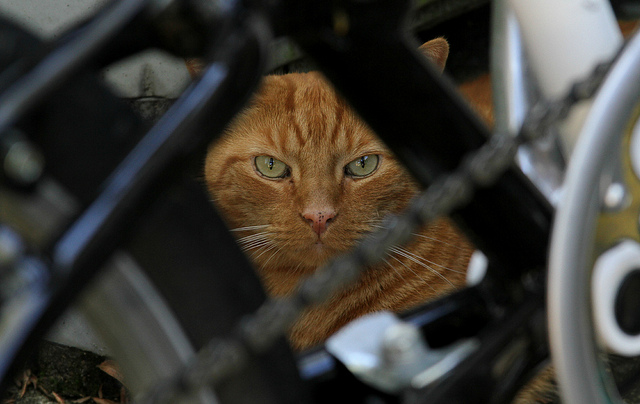 Hands-on versus hands-off – as a leader it’s a fundamental choice. And for me the single most important guiding principle is – do what it takes to maintain or strengthen the team’s personal ownership of the work.
Hands-on versus hands-off – as a leader it’s a fundamental choice. And for me the single most important guiding principle is – do what it takes to maintain or strengthen the team’s personal ownership of the work.
If things are going well, keep your hands off. This reinforces the team’s ownership and your trust in them. But it’s not hands-off in and ignore them sense; it’s hands-off in a don’t tell them what to do sense. Walk around, touch base and check in to show interest in the work and avoid interrogation-based methods that undermine your confidence in them. This is not to say a hands-off leader only superficially knows what’s going on, it should only look like the leader has a superficial understanding.
The hands-off approach requires a deep understanding of the work and the people doing it. The hands-off leader must make the time to know the GPS coordinates of the project and then do reconnaissance work to identify the positions of the quagmires and quicksand that lay ahead. The hands-off leader waits patiently just in front of the obstacles and makes no course correction if the team can successfully navigate the gauntlet. But when the team is about to sink to their waists, leader gently nudges so they skirt the dangerous territory.
Unless, of course, the team needs some learning. And in that case, the leader lets the team march it’s project into the mud. If they need just a bit of learning the leader lets them get a little muddy; and if the team needs deep learning, the leader lets them sink to their necks. Either way, the leader is waiting under cover as they approach the impending snafu and is right beside them to pull them out. But to the team, the hands-off leader is not out in front scouting the new territory. To them, the hands-off leader doesn’t pay all that much attention. To the team, it’s just a coincidence the leader happens to attend the project meeting at a pivotal time and they don’t even recognize when the leader subtly plants the idea that lets the team pull themselves out of the mud.
If after three or four near-drowning incidents the team does not learn or change it’s behavior, it’s time for the hands-off approach to look and feel more hands-on. The leader calls a special meeting where the team presents the status of the project and grounds the project in the now. Then, with everyone on the same page the leader facilitates a process where the next bit of work is defined in excruciating detail. What is the next learning objective? What is the test plan? What will be measured? How will it be measured? How will the data be presented? If the tests go as planned, what will you know? What won’t you know? How will you use the knowledge to inform the next experiments? When will we get together to review the test results and your go-forward recommendations?
By intent, this tightening down does not go unnoticed. The next bit of work is well defined and everyone is clear how and when the work will be completed and when the team will report back with the results. The leader reverts back to hands-off until the band gets back together to review the results where it’s back to hands-on. It’s the leader’s judgement on how many rounds of hands-on roulette the team needs, but the fun continues until the team’s behavior changes or the project ends in success.
For me, leadership is always hands-on, but it’s hands-on that looks like hands-off. This way the team gets the right guidance and maintains ownership. And as long as things are going well this is a good way to go. But sometimes the team needs to know you are right there in the trenches with them, and then it’s time for hands-on to look like hands-on. Either way, its vital the team knows they own the project.
There are no schools that teach this. The only way to learn is to jump in with both feet and take an active role in the most important projects.
Image credit – Kerri Lee Smith
If there’s no conflict, there’s no innovation.
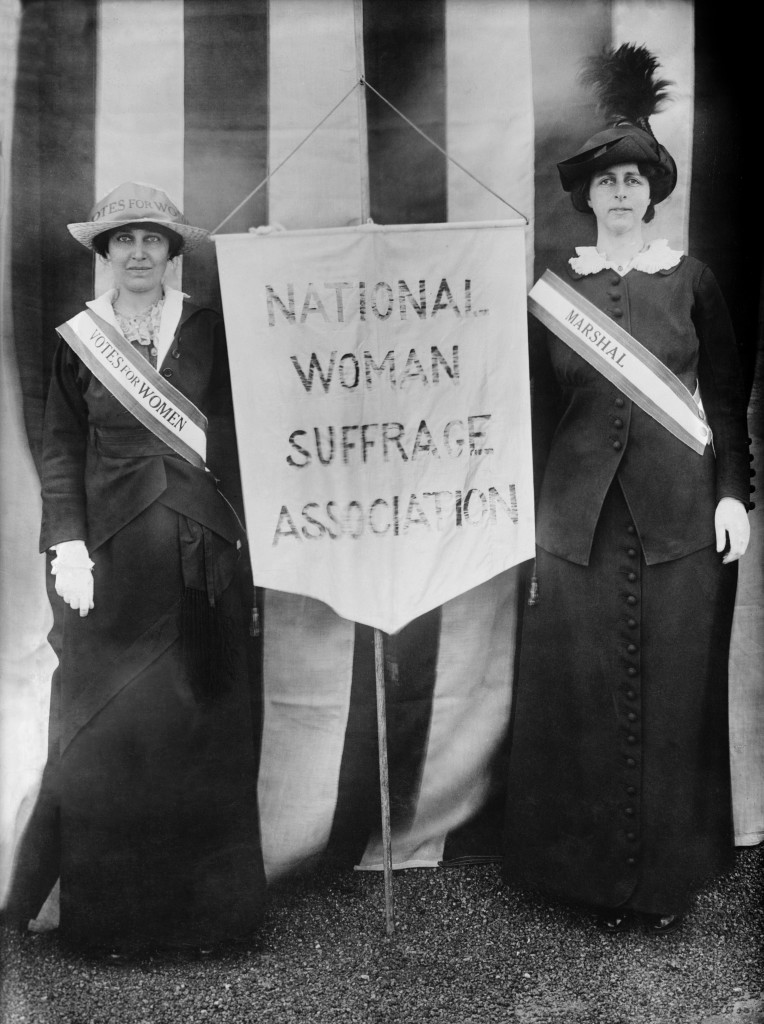 With Innovation, things aren’t always what they seem. And the culprit for all this confusion is how she goes about her work. Innovation starts with different, and that’s the source of all the turmoil she creates.
With Innovation, things aren’t always what they seem. And the culprit for all this confusion is how she goes about her work. Innovation starts with different, and that’s the source of all the turmoil she creates.
For the successful company, Innovation demands the company does things that are different from what made it successful. Where the company wants to do more of the same (but done better), Innovation calls it as she sees it and dismisses the behavior as continuous improvement. Innovation is a big fan of continuous improvement, but she’s a bit particular about the difference between doing things that are different and things that are the same.
The clashing of perspectives and the gnashing of teeth is not a bad thing, in fact it’s good. If Innovation simply rolls over when doing the same is rationalized as doing differently, nothing changes and the recipe for success runs out of gas. Said another way, company success is displaced by company failure. When innovation creates conflict over sameness she’s doing the company favor. Though it sometimes gives her a bad name, she’s willing to put up with the attack on her character.
The sacred business model is a mortal enemy of Innovation. Those two have been getting after each other for a long time now, and, thankfully, Innovation is willing to stand tall against the sacred business model. Innovation knows even the most sacred business models have a half-life, and she knows that she must actively dismantle them as everyone else in the company tries to keep them on life support long after they should have passed. Innovation creates things that are different (novel), useful and successful to help the company through the sad process of letting the sacred business model die with dignity. She’s willing to do the difficult work of bringing to life a younger more viral business model, knowing full well she’s creating controversy and turmoil at every turn. Innovation knows the company needs help admitting the business model is tired and old, and she’s willing to do the hard work of putting it out to pasture. She knows there’s a lot of misplaced attachment to the tired business model, but for the sake of the company, she’s willing to put it out of its misery.
For a long time now the company’s products have delivered the same old value in the same old way to the same old customers, and Innovation knows this. And because she knows that’s not sustainable, she makes a stink by creating different and more profitable value to different and more valuable customers. She uses different assumptions, different technologies and different value propositions so the company can see the same old value proposition as just that – old (and tired). Yes, she knows she’s kicking company leaders in the shins when she creates more value than they can imagine, but she’s doing it for the right reasons. Knowing full well people will talk about her behind her back, she’s willing to create the conflict needed to discredit old value proposition and adopt a new one.
Innovation is doing the company a favor when she creates strife, and the should company learn to see that strife not as disagreement and conflict for their own sake, rather as her willingness to do what it takes to help the company survive in an unknown future. Innovation has been around a long time, and she knows the ropes. Over the centuries she’s learned that the same old thing always runs out of steam. And she knows technologies and their business models are evolving faster than ever. Thankfully, she’s willing to do the difficult work of creating new technologies to fuel the future, even as the status quo attacks her character.
Without Innovation’s disruptive personality there would be far less conflict and consternation, but there’d also be far less change, far less growth and far less company longevity. Yes, innovation takes a strong hand and is sometimes too dismissive of what has been successful, but her intentions are good. Yes, her delivery is sometimes too harsh, but she’s trying to make a point and trying to help the company survive.
Keep an eye out for the turmoil and conflict that Innovation creates, and when you see it fan the flames. And when hear the calls of distress of middle managers capsized by her wake of disruption, feel good that Innovation is alive and well doing the hard work to keep the company afloat.
The time to worry is not when Innovation is creating conflict and consternation at every turn; the time to worry is when the telltale signs of her powerful work are missing.
Clarity is King
 It all starts and ends with clarity. There’s not much to it, really. You strip away all the talk and get right to the work you’re actually doing. Not the work you should do, want to do, or could do. The only thing that matters is the work you are doing right now. And when you get down to it, it’s a short list.
It all starts and ends with clarity. There’s not much to it, really. You strip away all the talk and get right to the work you’re actually doing. Not the work you should do, want to do, or could do. The only thing that matters is the work you are doing right now. And when you get down to it, it’s a short list.
There’s a strong desire to claim there’s a ton of projects happening all at once, but projects aren’t like that. Projects happen serially. Start one, finish one is the best way. Sure it’s sexy to talk about doing projects in parallel, but when the rubber meets the road, it’s “one at time” until you’re done.
The thing to remember about projects is there’s no partial credit. If a project is half done, the realized value is zero, and if a project is 95% done, the realized value is still zero (but a bit more frustrating). But to rationalize that we’ve been working hard and that should count for something, we allocate partial credit where credit isn’t due. This binary thinking may be cold, but it’s on-the-mark. If your new product is 90% done, you can’t sell it – there is no realized value. Right up until it’s launched it’s work in process inventory that has a short shelf like – kind of like ripe tomatoes you can’t sell. If your competitor launches a winner, your yet-to-see-day light product over-ripens.
Get a pencil and paper and make the list of the active projects that are fully staffed, the ones that, come hell or high water, you’re going to deliver. Short list, isn’t it? Those are the projects you track and report on regularly. That’s clarity. And don’t talk about the project you’re not yet working on because that’s clarity, too.
Are those the right projects? You can slice them, categorize them, and estimate the profits, but with such a short list, you don’t need to. Because there are only a few active projects, all you have to do is look at the list and decide if they fit with company expectations. If you have the right projects, it will be clear. If you don’t, that will be clear as well. Nothing fancy – a list of projects and a decision if the list is good enough. Clarity.
How will you know when the projects are done? That’s easy – when the resources start work on the next project. Usually we think the project ends when the product launches, but that’s not how projects are. After the launch there’s a huge amount of work to finish the stuff that wasn’t done and to fix the stuff that was done wrong. For some reason, we don’t want to admit that, so we hide it. For clarity’s sake, the project doesn’t end until the resources start full-time work on the next project.
How will you know if the project was successful? Before the project starts, define the launch date and using that launch data, set a monthly profit target. Don’t use units sold, units shipped, or some other anti-clarity metric, use profit. And profit is defined by the amount of money received from the customer minus the cost to make the product. If the project launches late, the profit targets don’t move with it. And if the customer doesn’t pay, there’s no profit. The money is in the bank, or it isn’t. Clarity.
Clarity is good for everyone, but we don’t behave that way. For some reason, we want to claim we’re doing more work than we actually are which results in mis-set expectations. We all know it’s matter of time before the truth comes out, so why not be clear? With clarity from the start, company leaders will be upset sooner rather than later and will have enough time to remedy the situation.
Be clear with yourself that you’re highly capable and that you know your work better than anyone. And be clear with others about what you’re working on and what you’re not. Be clear about your test results and the problems you know about (and acknowledge there are likely some you don’t know about).
I think it all comes down to confidence and self-worth. Have the courage wear clarity like a badge of honor. You and your work are worth it.
Image credit – Greg Foster
Top Innovation Blogger of 2014
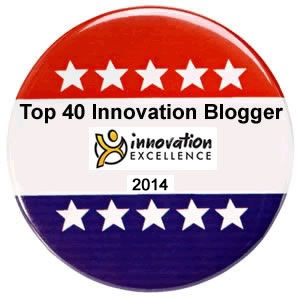 Innovation Excellence announced their top innovation bloggers of 2014, and, well, I topped the list!
Innovation Excellence announced their top innovation bloggers of 2014, and, well, I topped the list!
The list is full of talented, innovative thinkers, and I’m proud to be part of such a wonderful group. I’ve read many of their posts and learned a lot. My special congratulations and thanks to: Jeffrey Baumgartner, Ralph Ohr, Paul Hobcraft, Gijs van Wulfen, and Tim Kastelle.
Honors and accolades are good, and should be celebrated. As Rick Hanson knows (Hardwiring Happiness) positive experiences are far less sticky than negative ones, and to be converted into neural structure must be actively savored. Today I celebrate.
Writing a blog post every week is challenge, but it’s worth it. Each week I get to stare at a blank screen and create something from nothing, and each week I’m reminded that it’s difficult. But more importantly I’m reminded that the most important thing is to try. Each week I demonstrate to myself that I can push through my self-generated resistance. Some posts are better than others, but that’s not the point. The point is it’s important to put myself out there.
With innovative work, there are a lot of highs and lows. Celebrating and savoring the highs is important, as long as I remember the lows will come, and though there’s a lot of uncertainty in innovation, I’m certain the lows will find me. And when that happens I want to be ready – ready to let go of the things that don’t go as expected. I expect thinks will go differently than I expect, and that seems to work pretty well.
I think with innovation, the middle way is best – not too high, not too low. But I’m not talking about moderating the goodness of my experiments; I’m talking about moderating my response to them. When things go better than my expectations, I actively hold onto my good feelings until they wane on their own. When things go poorly relative to my expectations, I feel sad for a bit, then let it go. Funny thing is – it’s all relative to my expectations.
I did not expect to be the number one innovation blogger, but that’s how it went. (And I’m thankful.) I don’t expect to be at the top of the list next year, but we’ll see how it goes.
For next year my expectations are to write every week and put my best into every post. We’ll see how it goes.
Slower Can Be Faster
 There are two types of drivers – those that speed as a way of life and those that speed when they forget to pay attention. But for both, speed kills.
There are two types of drivers – those that speed as a way of life and those that speed when they forget to pay attention. But for both, speed kills.
For the everyday speeder, life is an opportunity to push limits and break rules. Every highway is a Formula One course; every traffic light an opportunity to run the red light. They know every speed trap and have honed their drag racing tactics, and, mostly, they don’t get caught. And driving this way year-on-year, they no longer realize they’re speeding and no longer see it as dangerous behavior. They see themselves as invincible and even take pride in their reckless behavior, and that’s dangerous.
If you’ve made the product before, or you’ve done something similar, you know all the traps and a fast business decision isn’t bad. But fast all the time isn’t the answer. When you’re in country that drives on the wrong side of the road and you approach a round-about, slower is better. When you don’t understand the road signs; when your left-right decisions are backward; and you don’t know how to negotiate the big circle of traffic, it’s pretty clear slower is better. But if you’ve been successful with your habitual speeding, you’ll likely accelerate into the traffic circle, rear-end someone, and flip yourself end others into a deadly pileup. And if you survive, likely curse those stupid drivers who didn’t know enough to get out of your way.
But there’s a simpler case that seals it. When you don’t know where you’re going, clicking off miles on the odometer isn’t progress, it’s just activity (that burns fuel). In these conditions, going fast in the wrong directions is worse than not driving at all. When you’re lost, it doesn’t make sense to speed.
The conscientious speeder keeps two hands on the wheel and maintain safe separation distance at upwards of ten car lengths. For them, every day is an opportunity to check the tire pressure and check the dipstick for oil. They plan out the trip, check the road conditions, and pay attention. (Cell phones off for these folks.)
Today’s cars are quiet and smooth which makes for calm, comfortable driving. But they’re also powerful, and, even with good intentions, a brief lapse in attention can generate breakneck speed. The conscientious speeder backs off the accelerator as soon as attention returns, and the danger is low. But, when a lapse in attention overlaps with a quick change in driving conditions (a deer runs across the highway, or the car in front jacks on the breaks), you can’t react quickly enough, and that’s dangerous.
If you’ve made the product before, or you’ve done something similar, and you checked the tire pressure, a lapse in attention once in a while isn’t bad. But doing the same drive every day and lulling yourself into a road trip stupor isn’t the answer. When you’re cruising over the limit on a well-lit, dead-straight highway, in your serenity you can easily speed past your exit without knowing. And the faster you’re going, the more exits you’ll miss until you realize it.
Sometimes, when the conditions are right, slower is faster.
Letting Go Of Last Year
Last year is gone, and going forward things will be different. Last year’s you is gone, and going forward you will be different. That’s the thing – everything changes. Regardless if last year was enjoyable or terrible, no matter. This year will be different. You can try to hold on to it, but all you’ll get is rope burns. Or, you can take comfort in the impermanence.
Your company is different; your competitors are different; your customers are different. In fact, everything is different. And what you did last year won’t get the same response today. Yet we hold on. It’s difficult to see things as they are when there’s so much comfort in seeing things as they were. Even if things weren’t so good last year, there’s comfort in seeing things as they were.
Toughest of all is to see yourself as you are. (I’m not talking about the body stuff – older, grayer, more wrinkles – that’s easy to see. I’m talking about the inside stuff.) On the inside, you are not what you were last year. You don’t have to know how you are different; just take comfort that you are different. Take comfort that right here, right now, as you sit, you are different, and so is everything else.
It’s difficult to plan out how things will go this year; and it’s impossible to predict how you’ll grow. Things will change; you will change; and putting yourself in that frame of mind can be helpful.
At the New Year, take time to celebrate the upcoming impermanence that will surely find you.
Photo from free HDR Photos – www.freestock.ca
What Aren’t You Doing?
You’re busier than ever, and almost every day you’re asked to do more. And usually it’s more with less – must improve efficiency so you can do more of what you already do. We want you to take this on, but don’t drop anything.
Improving your efficiency is good, and it’s healthy to challenge yourself to do more, but there’s a whole other side to things – a non-efficiency-based approach, where instead of asking how can you do more things, it’s about how you can do things that matter more.
And from this non-efficiency-based framework, the question “What aren’t you doing?” opens a worm hole to a new universe, and in this universe meaning matters. In this universe “What aren’t you doing?” is really “What aren’t you doing that is truly meaningful to you?”
[But before I’m accused of piling on the work, even if it’s meaningful work, I’ll give you an idea to free up time do more things that matter. First, change your email settings to off-line mode so no new messages pop on your screen and interrupt you. In the morning manually send and receive your email and answer email for 30 minutes; do the same in the afternoon. This will force you to triage your email and force you to limit your time. This will probably free up at least an hour a day.]
Now we’ll step through a process to figure out the most important thing you’re not doing.
Here is a link to a template to help you with the process — Template – What Aren’t You Doing.
The first step is to acknowledge there are important things you’re not doing and make a list. They can be anything – a crazy project, a deeper relationship, personal development, an adventure, or something else.
To make the list, ask these questions:
I always wanted to ____________.
I always wished I could __________.
Write down your answers. Now run the acid test to make sure these things are actually meaningful. Ask yourself:
When I think of doing this thing, do I feel uncomfortable or or a little scared?
If they don’t make you a little uncomfortable, they’re not meaningful. Go back to the top and start over. For the ones that make you uncomfortable, choose the most important, enter it in the template, and move to the next step.
In the second step you acknowledge there’s something in the way. Ask yourself:
I can’t do my most meaningful thing because _______________.
Usually it’s about time, money, lack of company support, goes against the norm, or it’s too crazy. On the template write down your top two or three answers.
In the third step you transform from an external focus to an internal one, and acknowledge what’s in the way is you. (For the next questions you must temporarily suspend reality and your very real day-to-day constraints and responsibilities.) Ask yourself:
If I started my most meaningful thing tomorrow I would feel uncomfortable that ____________.
Write down a couple answers, then ask:
The reason I would feel uncomfortable about my most meaningful thing is because I __________. (Must be something about you.)
Write down one or two. Some example reasons: you think your past experiences predict the future; you’re afraid to succeed; you don’t like what people will think about you; or the meaningful stuff contradicts your sense of self.
Spend an hour a week on this exercise until you understand the reasons you’re not doing your most meaningful thing. Then, spend an hour a week figuring out how to overcome your reasons for not doing. Then, spend an hour a week, or more, doing your most meaningful thing.

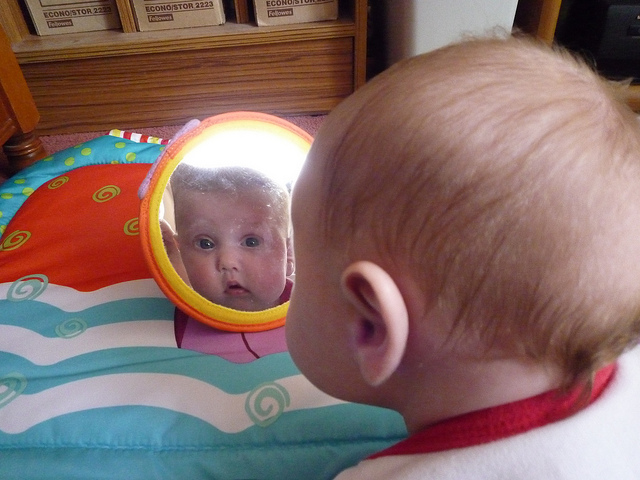
 Mike Shipulski
Mike Shipulski